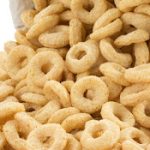Here’s an example of how to calculate unit prices and some recent lessons I’ve learned from my grocery shopping. Thanks to Amber for encouraging me to write more about unit prices. It is useful to calculate unit prices when you are comparing the prices of two or more products with different package sizes.
Store Brand Wins Again!
I always buy Quaker Oatmeal, and I didn’t even realize there was a store brand until last night. I can save $1.51 per container by buying the Kroger brand of old fashioned oatmeal. But, I had a coupon for Quaker, so I needed to calculate the unit price to determine if I should buy the small container of Quaker with the coupon, or the large container of Kroger brand. The Quaker coupon is to save 60 cents off an 18 oz. or larger container, so I’ve used the post-coupon price below for my unit price calculations.
Quaker Unit Price for 42 oz. = $2.89 divided by 42 ounces = $0.0688 per ounce
Quaker Unit Price for 18 oz. = $1.59 divided by 18 ounces = $0.0883 per ounce
Kroger Unit Price for 42 oz. = $1.98 divided by 42 ounces = $0.0471 per ounce
I am buying the Kroger brand of oatmeal from now on (unless there is a really good sale plus coupon for Quaker that can beat the Kroger unit price!). I used to buy instant oatmeal, so I guess I have come a long ways in saving money on my oatmeal purchases. The old fashioned oats are not that far from being instant – it only takes 3 minutes in the microwave to cook them!
You Pay for Packaging
I always buy the individually packaged Yoplait Kids yogurt to eat with our breakfast. Can I save money by buying a large container of Kroger brand vanilla yogurt instead? I calculated the unit prices so that I could compare them. I had a coupon to Save $1 off 2 Yoplait Kids yogurt, so the price below is the post-coupon price.
Yoplait Kids yogurt for 24 oz. = $1.66 divided by 24 ounces = $0.0692 per ounce
Kroger Vanilla yogurt for 32 oz. = $2.19 for 32 ounces = $0.0684 per ounce
Wow, these unit prices are really close! I’ll try the Kroger brand of yogurt. But if I get a coupon for Yoplait that is better than 50 cents off, I’ll definitely buy the Yoplait.
More thoughts on Unit Price Calculations
Remember that when you calculate unit prices that you might want to calculate them based on a different unit than what the store shows in the unit price below the price sticker on the shelf. Sometimes those unit price labels are handy, but I often find them to be unhelpful. If I’m buying granola bars, the unit of measurement I will use for my unit price calculation is “per each” or “per bar” regardless of how many ounces each bar is (they vary from brand to brand). You have to think about how you consume the products you buy when calculating the unit price. It is important to note that with perishable products like yogurt that you take into account whether you can actually eat the amount you are purchasing before it spoils. Also, when looking at buying individually packaged products versus “bulk” consider if it will affect the serving size (i.e. the pre-packaged items are automatically measured for you and ready to serve in that specific size). And sometimes it just makes sense to buy the smaller package (even if the unit price is higher) if it matches closer with your consumption of that product.
So, stick a calculator, pen, and paper in your purse and you’re ready to calculate unit prices!
Find more coupon tips that I’ve shared!
![]()





Leave a Reply